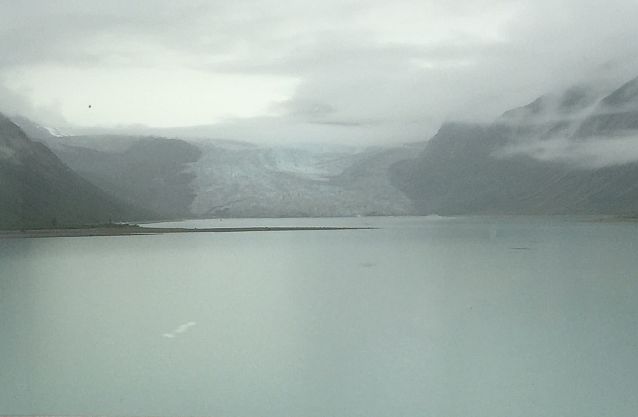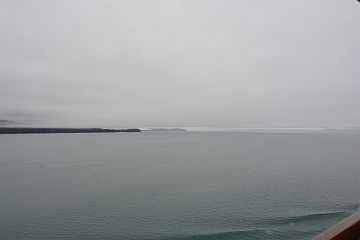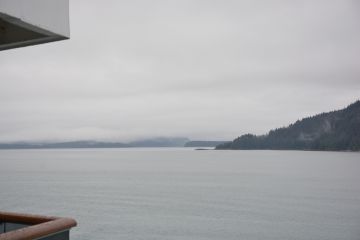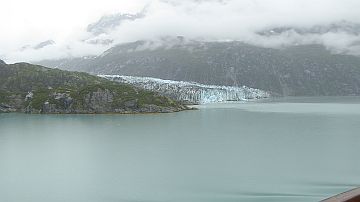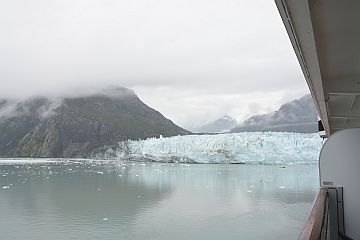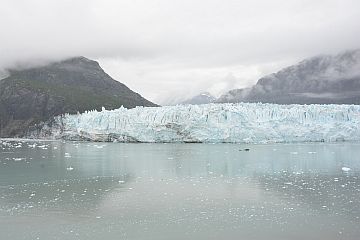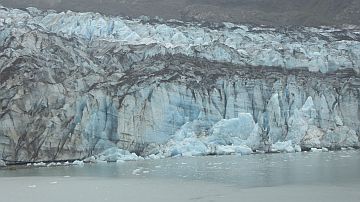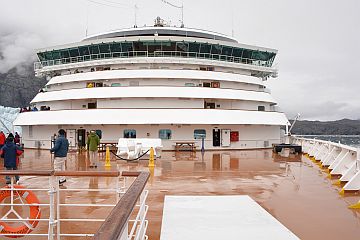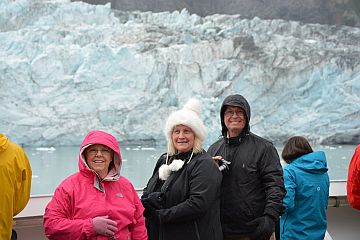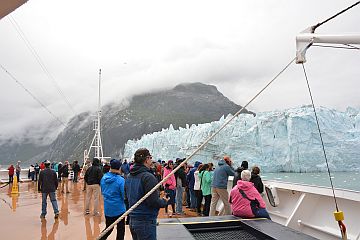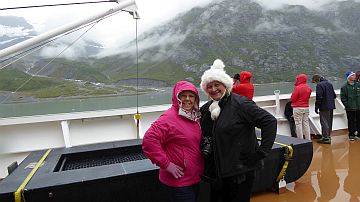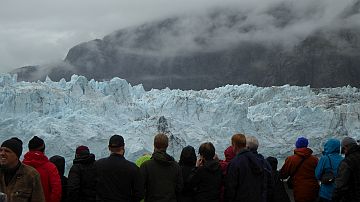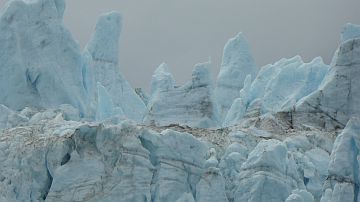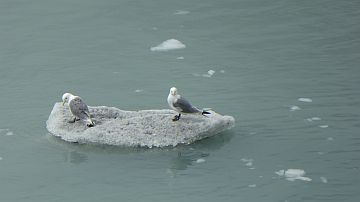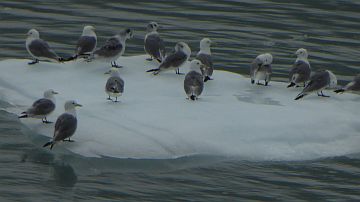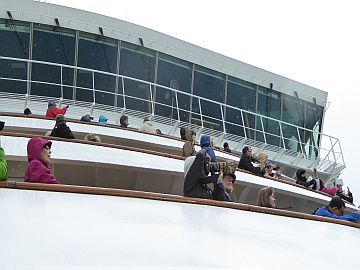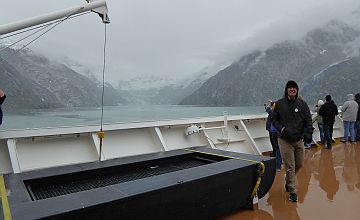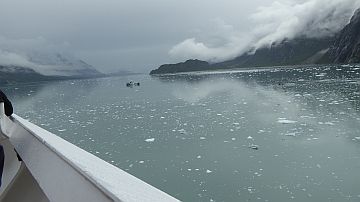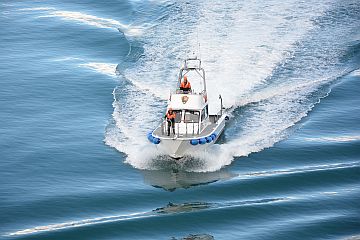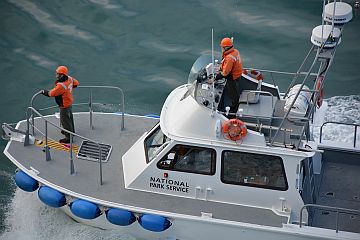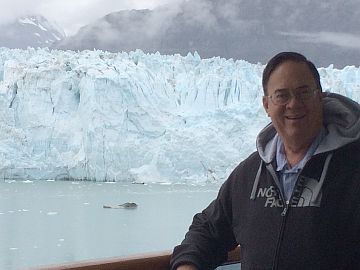The Glacier Bay has many branches, inlets, lagoons, islands, and channels that holds prospects for scientific exploration and visual treat. Thus, the area is popular as a cruise ship destination during summer season. However, there are restrictions imposed by the National Park Service on the numbers of vessels that can operate in a day to 2 cruise ships, 3 tour boats, 6 charter vessels, and 25 private vessels. According to National Park Service statistics for calendar year 2009, 444,653 people visited Glacier Bay, with 422,919 of those being cruise ship passengers. We were told that glacier ice is many times denser than regular ice (like ice cubes). It is not chewable (you will be seeing a dentist if you try to bite it!).
The glaciers have a bluish color because of the density of the ice and its ability to absorb most all colors of the spectrum other than blue. So - we see blue!
